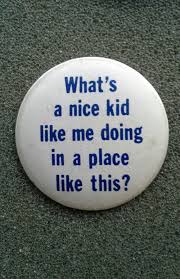A friend asked me recently if I had always planned to homeschool. I explained that no, I hadn’t, but after attending my first local non-secular homeschool picnic (THN for those of you in Hamilton and Burlington Ontario), I knew that we needed to give it a try.
As a teacher, I had an idea of what a multi-age picnic would look like. However, this picnic was different. The kids were SO NICE! This was the kind of community that I wanted for my kids! After the picnic, I messaged my teacher friends to say “I’ve discovered where all the nice kids are!”
You see, as a teacher, I knew that in a school environment there are some kids that get labelled “nice kids” and as a teacher, you really hope that your own child finds that group when they enter school. You also hope your receives that label themselves. That label means your kid is doing alright. The “nice kids” avoid a lot of the bullying and drama and heartache that seems to find the rest of the student body. Every teacher enjoys their time with “the nice kids” because they are easy to get along with and having them in your class makes your teaching job easier.
After the picnic, I wondered if I had stumbled upon some magical land. The homeschoolers are really nice kids. Everyone I met would fall into my “nice kids” label if they were in my classroom. Yet, I couldn’t help but notice that the homeschool kids still have meltdowns, they still struggle with things, basically they are still real kids! The more time we spent hanging out with the homeschoolers, the more I realized how there was something wrong with my “nice kids” label. This is a teacher’s version of “de-schooling” by the way.
I feel uncomfortable saying this publicly, because so many of my friends and family members are classroom teachers, but all kids are, in fact, “nice kids”, it’s the school environment that creates the label dichotomy. I’ll say that again for all the parents who have had a kid who struggled – I realize now that ALL KIDS ARE “NICE KIDS”. I say this in the sense that all kids are the same, they are showing up, every day as a real person, with real legitimate needs. Unfortunately, the school environment is just not set up to meet their needs. In fact, it often amplifies their unmet needs and can even create new needs! And so kids get labelled. (As teachers, we give kids this label as our way of dealing with our own challenges and unmet needs but that’s another blog post.)
So like every other human, kids show up to school with needs. In a school environment, there is one adult per approximately 20 children who can potentially help to meet those needs. The environment is set up in such a way that children are not empowered to meet their own needs, at least not regularly or in a timely manner. So in an environment that seems impossibly unfair in getting those needs met, we add in an element of competition which creates new needs. Kids then naturally discover coping mechanisms to try to get their needs met in other ways or they become detached from their needs altogether. These options of indirectly meeting needs or denying they exist, make it difficult for the child, teacher, and other children to exist in the same space, let alone learn the curriculum.
Even if a child arrives at school with their needs regularly met in their home environment, the school environment is competitive, without a lot of support to navigate this competition and some kids who are “nice kids” at home, may develop strategies to cope with the competition and hierarchy at school, pushing them out of the “nice kids” category. I remember working with a child in JK who was a “nice kid” at home but in her efforts to fit in at school, was saying mean things to another student. This brought up her social status within her group of school friends such that losing her “nice kid” status was worth it to her. It was her coping mechanism in this competitive environment.
Personally, I wouldn’t have this insight without having had the experience of homeschooling my kids and hanging out with so many intelligent, dedicated homeschooling parents. Homeschoolers are learning in a completely different environment, one in which their needs are addressed directly and timely. The pace of homeschooling is less competitive and slower, so just removing that stress is helpful. The home environment is usually more empowering for kids to meet their own needs meaning that kids can take breaks, get exercise, spend some time playing and just basically stay in tune with their own needs so they can address them as they arise. Sometimes needs pop up that an empowered child cannot meet on their own and when that is the case, the adult – child ratio is usually much more favorable than the 1:20 ratio in a school classroom. Homeschooling has taught me that children, when their needs are addressed, are content. And content kids learn.
I just want to point out that even if your child is labelled a “nice kid”, check in with them. Make sure they are not suffering behind that label too. Children who are perfectionists, hide their needs in the name of approval or try, to become detached from their feelings are in just as much pain, yet sometimes get labelled as “the nice kids”. They sometimes like this label as they can hide behind it, but it doesn’t necessarily mean they are doing alright as I mentioned above.
I think I’m really lucky that I have been able to teach in the public system AND homeschool my kids. I feel really fortunate to have had both experiences and the learning and reflection that comes from it. My advice for parents, if they realize their child is expressing anything other than contentment with their life, would be to try a different environment. Show your child that getting needs met is important and model strategies about how to do it. If you can homeschool, do it! It is the best kept secret in education! And if you cannot homeschool, keep looking for other alternatives. We all deserve to be in environments where our needs are met. That safe space is where human potential lies; potential for contentment, peace, love, connection, and learning.
Critical Thinking Awareness Challenge: Type “nice kid” into a Google image search and tell me, what patterns do you see?


